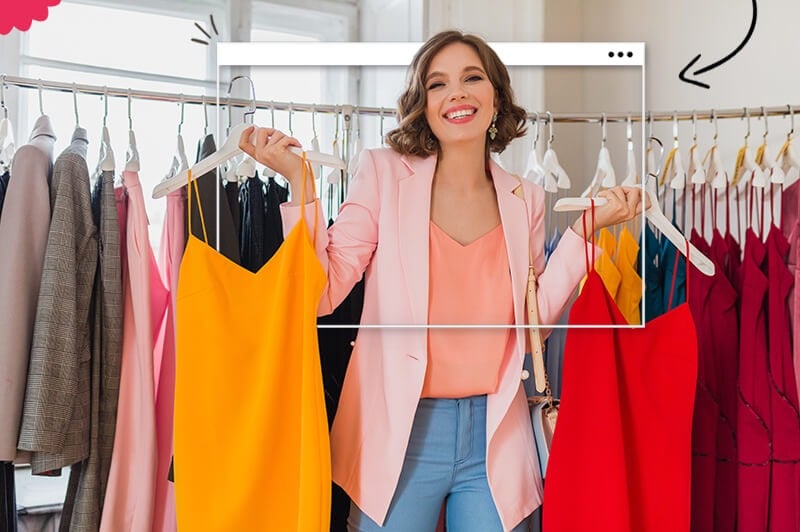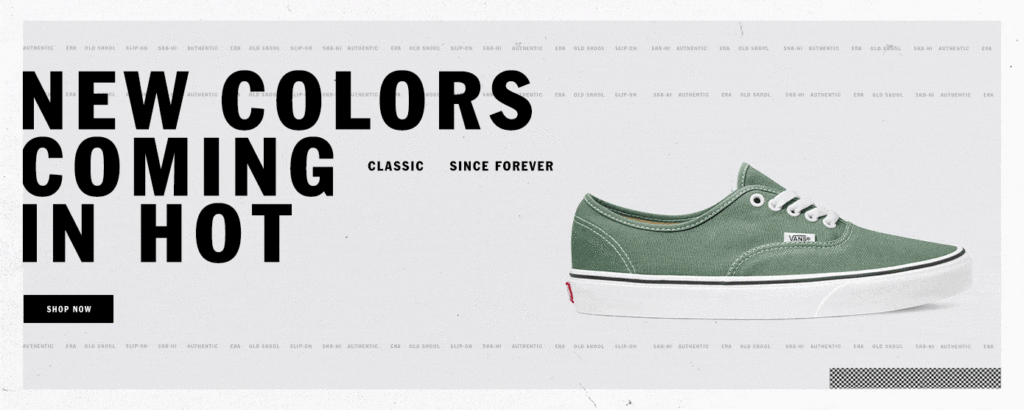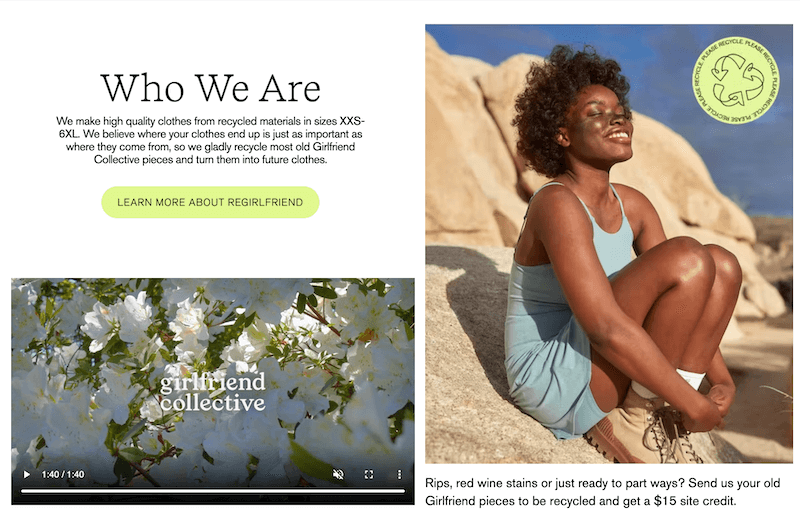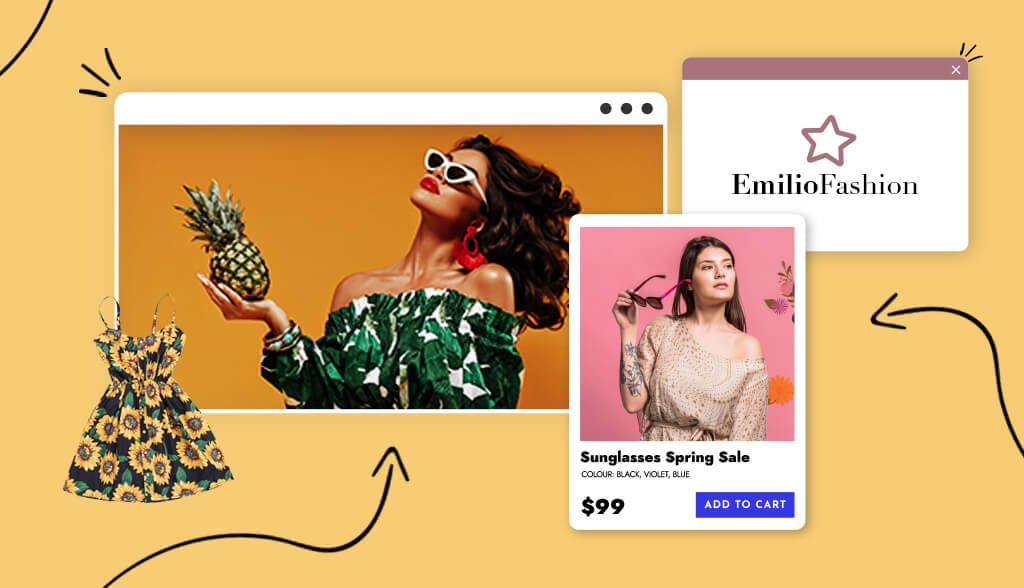The clothing industry is one of the most competitive and saturated markets out there. So what does your business need to become successful in the industry? A key part of a successful clothing line is nailing the branding. Branding is how you position yourself with the best in the industry and cement your spot there.
The clothing industry is all about visuals and emotions. Your target audience will judge your clothing line brand from your website, logo, social media posts, color scheme, aesthetic, how you interact with them, and much more.
That’s to say, branding is a broad topic that encompasses a lot of different factors. This article breaks down the best practices for branding your clothing line, plus inspiration to get your creativity flowing.
What is Fashion Branding?
First, let’s define what branding is: A continuous process that identifies your products and/or services from other businesses in the market. You cultivate a vibe—emotions and perceptions—around your brand that you constantly communicate to your target audience through visual and verbal cues.
Fashion branding encompasses all the ways a business establishes their image in their customers’ eyes. Branding is more than just the clothing or jewelry you create—it’s the visuals like color palette, symbols, images, and more. Also, branding is any other distinct characteristic of your business that sets you apart.
Why it’s Important to Brand Your Clothing Line
Through both visual and verbal cues, branding reaches our subconscious and dictates our purchasing decisions. Your brand ultimately makes your target audience decide if you’re in or you’re out (read in Heidi Klum’s voice).
Branding your clothing business does many things, but I’ll mention 3: Raises brand awareness, brand recognition, and develops brand loyalty. Brand awareness is how easy it is for people to recall your brand name and products/services. Brand recognition is when your target audience recognizes your business based on branding components such as logo, color scheme, slogan, tone of voice, etc. And brand loyalty is ultimately what keeps customers coming back. As you can see, branding your clothing business is very important for your long-term success.
Branding Best Practices

There are best practices to review and keep in mind when crafting your clothing line brand.
Keep your target audience in mind
Your target audience is a specific demographic of individuals who want or need your product and/or service. That’s why your branding efforts must align and appeal to them. Branding with your target audience in mind will ensure you’re engaging their interest, sending a positive message, and encouraging customer loyalty.
Clothes have the power to influence how we feel and how others perceive us. Make sure your brand speaks to your target audience’s wants, needs, emotions, and expectations.
Let’s take an example: Vans is an apparel store blending the lines between skate culture and street fashion. That means Van’s branding needs to attract both the skating community and street fashionistas. Their branding manages to hit the mark each time with their impeccable visuals (website and social media game on point) and language (they’re certainly “off the wall”).

Stand out from the crowd
Your clothing business has at least one to several competitors, which means you have to differentiate your business from them. The competition might make you uneasy, but with the right positioning and messaging, you can ensure you stand out from the crowd and make your mark on the industry.
Evoke emotion
Fashion is intrinsically tied to self-expression and so it’s crucially important brands establish emotional connections with their target audience. Believe it or not, research has proven that emotions are a key part of sales and retention. Customers become loyal to brands they feel connected to. In fact, when businesses connect with their customers’ emotions, the payoff can be huge.
Tell a story
This best practice tip overlaps with evoking emotion. Businesses evolve from an idea, passion, or a mission. How your business went from a kernel of thought to reality is a story that should guide your branding.
It’d be helpful to use an example: Girlfriend Collective is a business that uses their story to guide their branding efforts. The athleisure apparel brand prides itself on creating clothes made from 100% recycled materials. Girlfriend Collective is so dedicated to sustainable fashion that even parts of their packaging are re-made from other materials.

In the same vein, Girlfriend Collective emphasizes health and wellness in all body shapes and sizes. The color scheme, images, tone, and language all create a brand that’s sure of itself and uses their story to push their business forward.
Be consistent
All the things I talked about up until now wouldn’t make your brand successful if you’re not consistent. I can’t emphasize enough how important consistency is when it comes to branding your clothing line. The more consistent your brand image, the more customers will resonate with your business.
Essentials for Every Fashion Line
The next thing to cover is what actually goes into a fashion brand. Let’s check out the various elements that make up a brand.
Logo
Your logo is the face of your fashion brand and the first shot you have at making a good impression. A lot is riding on your logo!
As part of your visual brand identity, your logo needs to have strong design elements like color palette, icon, typography, layout, and slogan (if relevant). before creating your fashion logo, do your research. Find out which colors align with your business values, which kind of icon you want, and which font suits you best.
Social media profiles
Online shopping isn’t slowing down anytime soon, which means being present on social media platforms is a must for fashion brands. Social media’s the best way to show off your collection and aesthetic to a wide audience. What’s more, your social media accounts help users find your business’s website. If you run paid ads, you can funnel social media users towards your website to purchase clothes.
E-commerce
In recent years, e-commerce has grown exponentially, especially in the fashion industry. Research shows fashion is the largest B2C e-commerce market segment in the U.S.
When it comes to branding on e-commerce, don’t overlook the power of packaging. What consumers see before buying a product has a huge impact on their purchasing decisions.
In one survey, 72% of American consumers state that a product’s packaging design has an impact on their decision to buy. Another staggering stat: 67% of consumers state that the materials used to package a product often influence their purchase decisions when selecting which products to buy.
Retail store
From the moment your customer opens the door to your store, what experience do you want them to have? Down-to-earth and peaceful? Or maybe sophisticated and chic. Whatever it is, you need to have your branding down pat.
From the clothes your employees wear to the shopping bag your customer leaves with, it’s important to have every aspect of the shopping experience coordinated and in line with your brand. Let’s look at what else you should consider when it comes to branding in your retail store.
Design stunning signage
Your store’s signage is the first interaction with your customer and it’s a crucial means of introducing your brand. Creating a sign that makes a good impression and sticks in people’s minds is crucially important.
Make use of your color scheme
Make good use of your brand color scheme in your retail store. Many businesses have a color scheme that sets them apart; Vans, for example, use bright colors in their branding materials. This is an easy way to represent your identity as a brand and leave an impression on customers. And if you need even more convincing, a study conducted by the University of Loyola showed that color determines brand recognition by 80%.
Experiment with lighting
If you’ve ever walked into an Abercrombie & Fitch store, you know that lighting can create a certain feeling. You can use lights to showcase products, create a mood using color lights, or opt for natural lighting. Get creative and do what feels intuitive and in line with the rest of your brand.
Play the right music
Your retail store has to give your customers an all-around experience that they’ll enjoy enough to come back (with friends!). Set the tone with the right music playlist to enhance the shopping experience and add depth to your brand. Just be mindful of the volume at which you play your music—not too loud they’re covering their ears, but not too low that they can’t hear it.
Over to You
To summarize, this post has covered what branding is, why it’s important, best practices, examples of brands doing it right, and the various elements that go into a brand. Now you should be well-equipped to start branding your clothing line!
